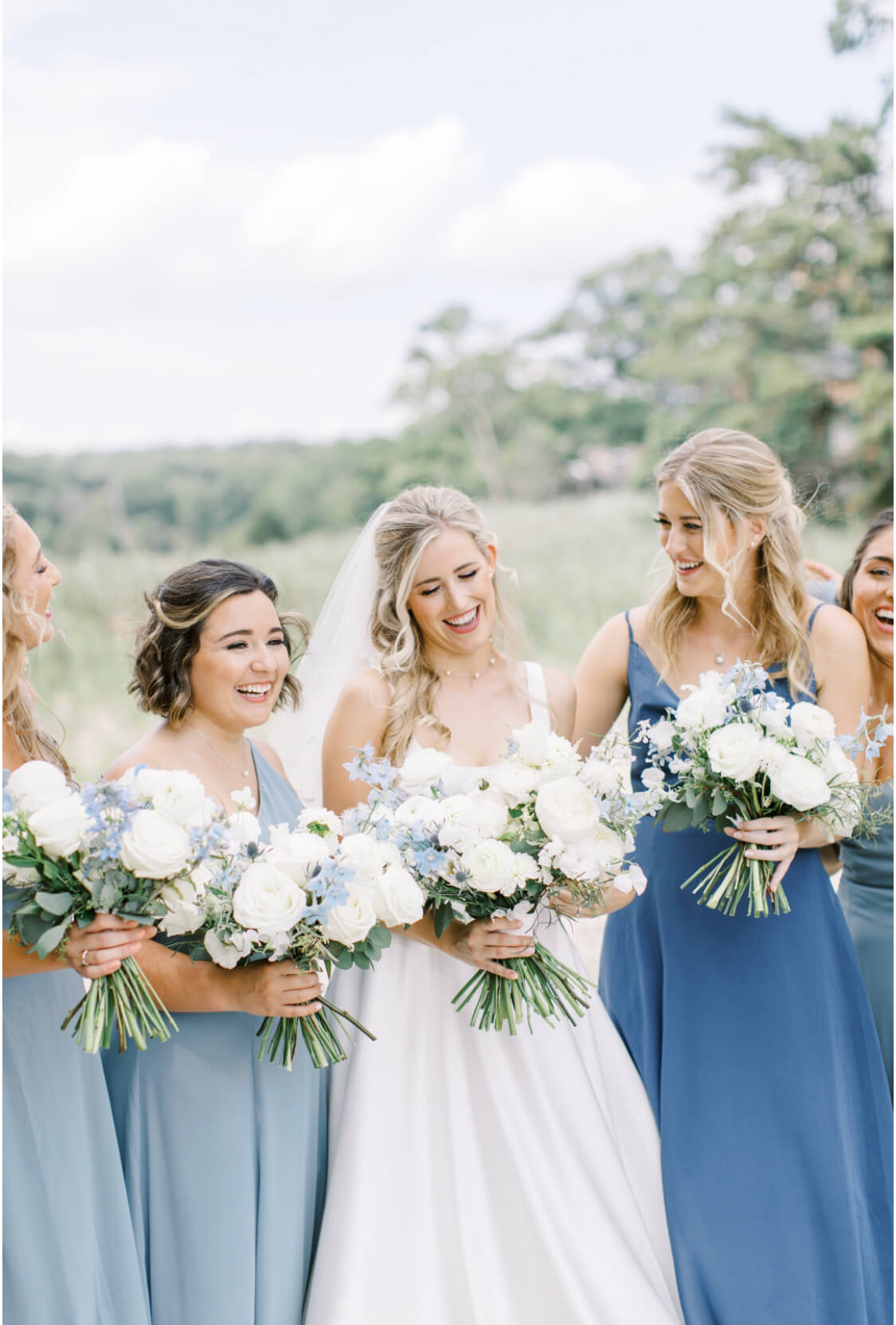About
Blog
Stemslider
Workshops
Bouquet Recipes
Shop
New mini-StemSlider: 15% off with Bundless & FREE Vase & Engraving✨
Browse around
topics
Hello Everyone!
floral designer + educator
I'm Koko
I'm floral designer, gardener and your flower bouquet coach. I'm so glad you're here. Let's enrich your bouquet skills together! Read my story
We all know there are not many varieties of natural blue colored flowers in the world. Delphiniums stand out as a beautiful blue flower and is the most used blue flower, especially for summer weddings! A pairring of white flowers with delicate light blue Delphiniums creates a refreshing and elegant atmosphere. Furthermore, pairing Delphinium’s blue hues with blush or peach-colored flowers creates a unique and romantic ambiance.
While there are other naturally light blue-colored flowers like Tweedia, Eryngium, Nigella, Forget-me-not, or Hydrangea, none quite capture the delicate look with long stems. Despite its popularity in summer weddings, working with Delphiniums has always been a source of anxiety for me especialy when I need to purchase them a dozen of bunches in summer.
The challenge lies in the petals, which have a tendency to fall off quickly. Even right after sourcing them from the market, immediately re-cutting stems, placing them in cold water with Chrysal 2, and refrigerating them until the day of the arrangement, I’ve often found that, on the actual day, a significant portion of petals has already fallen off, resulting in over half of them being unusable, especially when I had to order a dozen or more bunches in the high-demand season, summer.

Delphinium is highly sensitive to ethylene, and unless growers administer precise Silver Thiosulfate (STS) treatment immediately after harvesting, petal loss becomes a rapid occurrence. The effectiveness of STS treatment relies on its prompt application after harvest, using a specific concentration of an ethylene solution for a designated duration. Also, although florists like us try to do STS treatment after sourcing them from the flower markets, it won’t be effective because it has to be done right after the harvest stage.
In the study in Japan, after Delphiniums were harvested and placed in distilled water at 23 degrees Celsius (73.4 F) without the STS treatment, they lasted only around 4 days. Conversely, with proper concentrations of STS treatment applied for several hours and kept the Delphiniums under the same conditions, the flowers lasted around 11 days. It shows that STS treatment made the vase life of Delphiniums significantly longer. No adding Chrysal or no re-cutting the stems during the experiment.
In another study, it showed that using water with flower foods only extends the flower life by 1-2 days. They used Delphiniums treated with STS, and no additional cutting or water changes were done during the experiment, and kept them at 23 degrees Celsius (73.4 F). Flowers in distilled water lasted 7-8 days, while those in water with Chrysal 2 lasted 8-9 days.
So, what does this mean? It shows that the vase life of Delphiniums is influenced by the grower’s STS treatment post-harvest than by whether florists use Chrysal in water after sourcing them from the flower markets.

The STS treatment methods may vary depending on the growers. I think that what florists can do is take action by researching the origins of high-quality Delphiniums. Whenever you receive beautiful good-quality Delphiniums, remember the names of growers and flower markets, and purchasing them repeatedly from the same grower at the same flower market can be a prudent approach. In my experience, Delphiniums sourced from local farmers and those imported from the Netherlands exhibited superior quality and longer vase life.
Also, if you need a dozen bunche of Delphiniums for your future events or weddings, I recommend to order extra bunches of Delphiniums or alternative flowers as a backup!
Related
Pin
Share
Leave a Reply Cancel reply
Previous Story
next Story
© 2025 Koko Floral Design, LLC
Join Me on Insta
How to Effortlessly Make a Loose & Airy Cascading Bouquet
I'm so glad you're here. Let's elevate your bouquet-making skill together!
